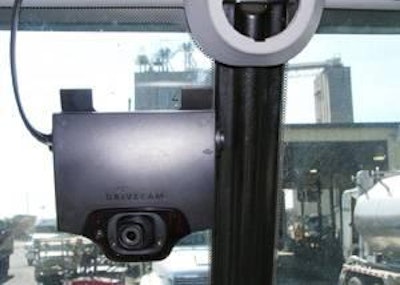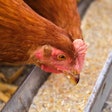
In the two fiscal years after video event recorders were installed in a test group of Perdue Farms’trucks, accidents dropped by 60 percent, according to Tommy Pollard, corporate fleet safety manager for Perdue Farms. In addition, there was clearly a financial gain as well. “The ROI after installation for those two fiscal years was 406 percent,” Pollard said, speaking to attendees at the U.S. Poultry & Egg Association’s Feed Mill Management seminar in Nashville.
Video as a tool
While video event recorders can help improve driving performance and minimize accidents, Pollard emphasized that they are just a tool and should not be considered as a replacement for solid management practices. A balance of hiring, safety processes and technologies is necessary to control and maintain driving risk.
Terminology and acronyms used in discussing onboard systems is vast, and Pollard gave a list of many that are used:
- LDWS: Lane Departure Warning Systems
- Eye Alert: A system that senses eye movement and alerts the driver
- Crash Avoidance Systems
- VORAD: Vehicle On Board Radar detection System
- Safety Vision: A system that uses radar, GPS and video
- BSWS: Blind Side Warning Systems
- OER: Onboard Event Recorders (for data such as speed and quick stops)
- GPS: Quail COM, Network Car
- OBVER: On Board Video Event Recorder
- EOBR: Electronic logs
- EVIR: Electronic Vehicle Inspection Systems
Commitment needed
However, having technology is not enough, according to Pollard. There must be a commitment by management, as resistance to the technology by drivers is inevitable. In addition, having technology can raise legal issues. If there is an incident, did management use the information the technology provided? If so, what was done with the information? These things can come out in legal proceedings, so it is important for management to work with its legal counsel in this area.
Pollard also noted that it is important to remember that management needs to use the technology to change behavior. “The technology by itself doesn’t do it,” he said.
Positive aspects
The positive aspects of the technology are many and varied, according to Pollard. It connects the driver and management and makes it possible to educate drivers on making good, conscious driving decisions. It also can assist with in-house statistics and can assist facilities in promoting an image of safety to the public.
In addition, Pollard noted that the technology truly works for management. There is very little IT footprint and minimal intrusion for the driver. There is instant driver feedback which helps in numerous ways, and event reporting is extensive, as is crash data.
New level of efficiency
Pollard said prior to installing onboard video event recorders, management had used 80% of their energy on reaching an agreement on what happened and 20% on preventing re-occurrence. Now that equation is inverted.
“Ultimately, you will see things that drivers would never admit to on their own. You will also see some good things that deserve recognition,” he said. “And when an accident occurs you will gain quicker closure, which reduces business interruption time. And if management sees something before an accident, it is a leading indicator.

















